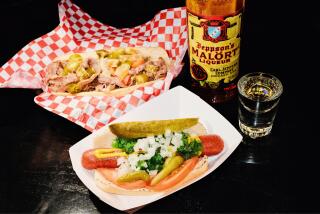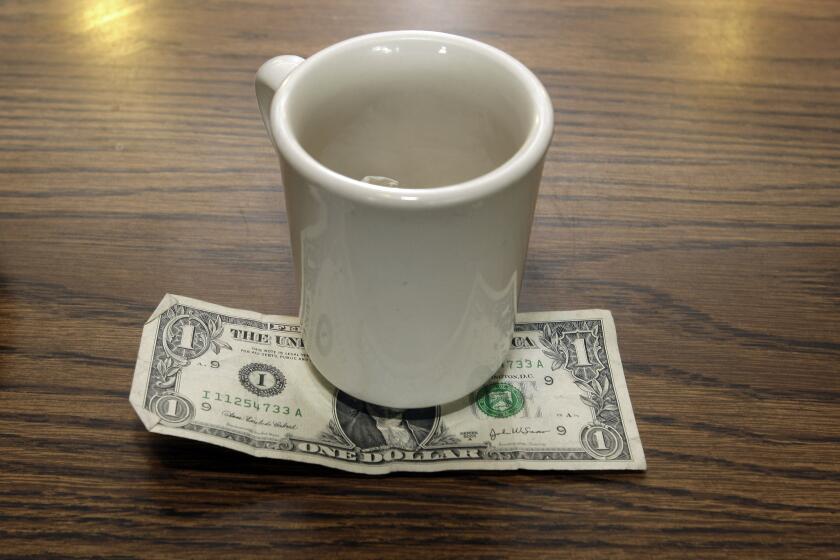Pizza Chains in Cheese Squeeze
- Share via
SMYRNA, Ga. — The cheese still goes on thick but pizza parlor bosses are giving employees a new edict when it comes to managing the mozzarella--don’t waste, it’s not so cheap, capisci?
“Yeah, I hear that a lot,” said Sherwin Kannukkaden, wiping his brow as he waits to pull another pie from the oven at a Mellow Mushroom restaurant in Smyrna, Ga.
While cheese prices fluctuate like any other commodity--because of weather, energy prices, supply, demand, herd conditions and countless other factors--high costs this summer are eating into the pizza industry’s bottom line.
“Oh man! I can cry for a week on that,” said Jim Fox, founder of Pittsburgh-based Fox’s Pizza Den, with 215 franchises in 17 states. “It’s just brutal.”
Cheese accounts for nearly half of a pizza’s cost, which makes restaurateurs extremely sensitive to price changes. And few in the industry are willing to buy in advance because the market is so volatile.
In their second-quarter earnings reports, Pizza Hut and Domino’s cited higher cheese costs as a factor for lower operating margins. Papa John’s International said it expects to pay more for cheese later this year, which will pressure margins.
Smaller players have been squeezed even more.
Michel Panos, who owns three Mellow Mushroom franchises, says his customers won’t pay more for his pizza, so he can’t pass along the higher cost.
“Cheese prices go up and [people] say, ‘What’s that got to do with us?’ ” he said. “They just see what the price of the pizza is. They don’t really know what all goes into it.”
Consumer expectations have been reinforced by pizza makers’ aggressive marketing. Half-price specials and bundled deals have become the norm in an industry with such price sensitivity and ferocious competition.
“The price of everything else in the world seems to go up, but a pizza has always been between 9 and 11 bucks,” said Tim McIntyre, a spokesman for Domino’s Pizza, based in Ann Arbor, Mich. “That’s what people think they cost.”
Market research shows sensitivity to “three-digit pricing,” McIntyre says--people buy lots more pizza at $9.99 than at $10.99.
Pizza operators are accustomed to swings in cheese prices. They typically jump in midsummer, when dry weather often curtails supply, and again during the winter holidays, when Americans tend to buy more cheese.
Cheese is traded in 40-pound cheddar blocks and 500-pound barrels on the Chicago Mercantile Exchange. Restaurant buyers’ prices for mozzarella and other varieties are based on the block pound price, which was $1.68 last week. In November, the cheddar block price fell to as low as 98 cents a pound.
Many pizza people say they’re bracing to pay high prices for several more months because of lagging supplies.
Alfonso Orefice, who owns Alfonso’s Pizzeria in Tampa, Fla., raised his price for extra cheese to $3, nearly double the $1.60 for other toppings. Orefice says he’ll probably raise pizza prices, too, if the cheese stays pricey.
“It’s getting tough,” he said. “The cows, they are driving us crazy.”
More to Read
Eat your way across L.A.
Get our weekly Tasting Notes newsletter for reviews, news and more.
You may occasionally receive promotional content from the Los Angeles Times.










